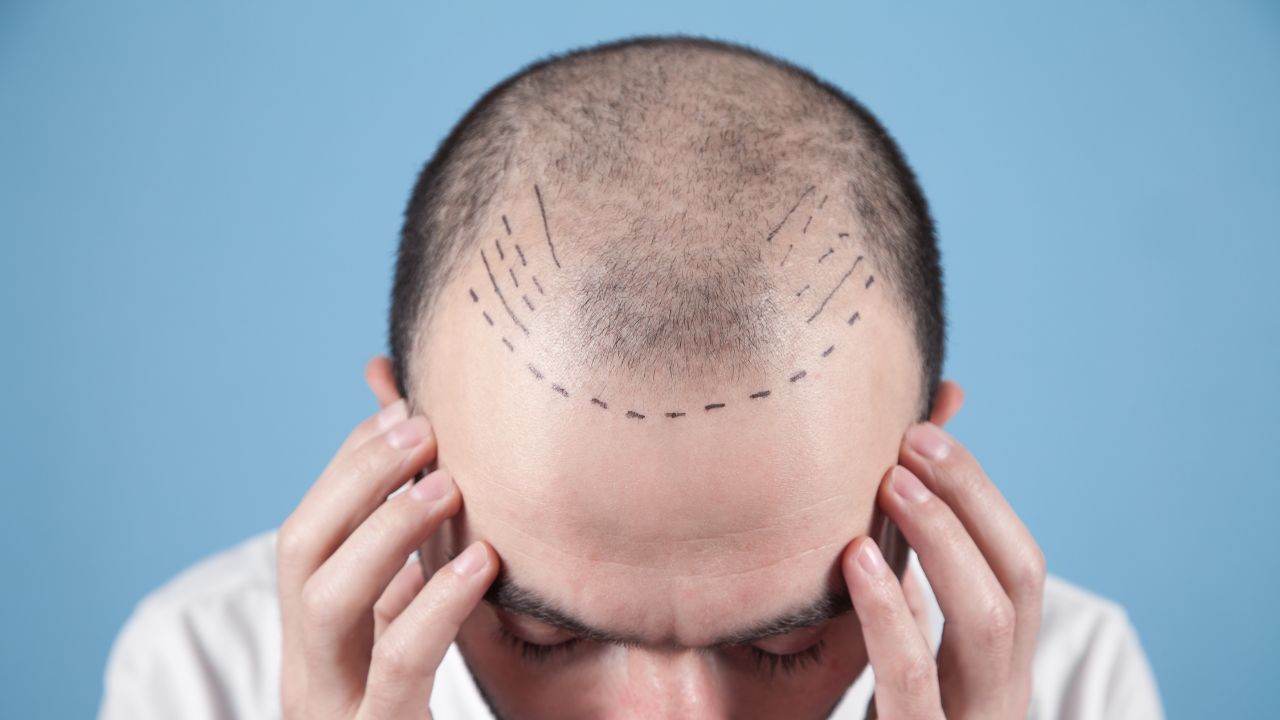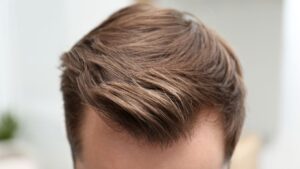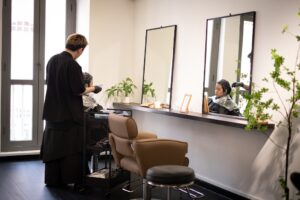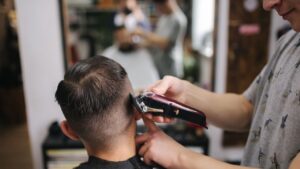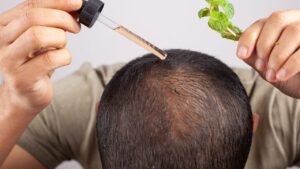Singapore is home to numerous aesthetic clinics and specialised centres offering advanced hair transplant techniques. However, navigating the different procedures, understanding the potential results, and deciphering the costs can feel overwhelming, especially with the variety of terms encountered online like FUE, FUT, DHI, ARTAS, and NeoGraft.
This guide will cover the main hair transplant surgeries commonly available in Singapore – primarily:
- Follicular Unit Transplantation (FUT)
- Follicular Unit Extraction (FUE)
- Direct Hair Implantation (DHI)
We’ll explore how each hair transplant method works, weigh their pros and cons and break down the typical costs involved.
1. What Is A Hair Transplant?
A hair transplant is a surgical technique designed to move hair from where it’s plentiful to where it’s needed. One important point to note is that the procedure uses your own hair follicles.
Think of it as relocating healthy, permanent hair follicles (the tiny organs within the skin responsible for growing hair) from a ‘donor area’ on your own scalp to a ‘recipient area’. The donor area is typically the back or sides of the head, where hair tends to be genetically resistant to balding, even in those experiencing significant hair loss. The recipient area is where the hair has thinned or disappeared.
Because the transplanted hair is genetically your own and comes from areas resistant to balding, it will typically continue to grow naturally in its new location for the long term, just like the rest of your hair. This is why hair transplants can offer a permanent solution and achieve results that look and feel natural.
The ultimate aim is to strategically redistribute these permanent hairs to improve density, restore a more youthful hairline, and enhance overall scalp coverage.

2. Popular Hair Transplant Methods in Singapore: FUE vs. FUT vs. DHI
While clinics may use various brand names or slight variations in technique, the hair transplant procedures commonly offered in Singapore primarily differ in how the hair follicles (grafts) are harvested from the donor area and how they are implanted into the recipient area. Understanding these core differences is key to comparing your options.
2.1. Follicular Unit Transplantation (FUT)
FUT involves the surgical removal of a thin, linear strip of scalp tissue from the donor area, usually the back of the head. This strip contains numerous healthy hair follicles. The site where the strip was removed is then carefully closed with sutures (stitches), which results in a fine linear scar.
Highly skilled technicians then meticulously dissect this strip under microscopes, separating it into individual follicular units or ‘grafts’. Each graft naturally contains a small cluster of 1 to 4 hairs.
Simultaneously, the surgeon prepares the recipient area by creating tiny incisions or ‘sites’ where the grafts will be placed.
Finally, these prepared follicular unit grafts are carefully inserted into the recipient sites, respecting the natural angle and direction of hair growth.
Advantages Of FUT
- High Graft Yield: FUT often allows surgeons to harvest a large number of grafts (potentially thousands) in a single surgical session. This can make it a more efficient option for individuals requiring extensive coverage due to significant hair loss.
- Potentially Lower Cost Per Graft: Because the harvesting process is generally quicker than extracting follicles one by one, FUT can sometimes be a more budget-friendly option when comparing the cost per graft, although the total price depends on many factors
- Excellent Graft Quality: When performed by an experienced team, the dissection process allows for careful handling and preservation of the follicular units, leading to high graft survival rates.
Disadvantages Of FUT
- Linear Scar: The most notable drawback is the linear scar left at the donor site. While often well-concealed by surrounding hair, it can be visible if the hair is worn very short.
- Longer Recovery & More Discomfort: Compared to FUE, FUT is generally considered more invasive due to the incision and sutures. This typically translates to a longer recovery period, potentially more post-operative pain, tightness, or numbness in the donor area.
- Activity Restrictions: More significant restrictions on strenuous activity are usually advised post-FUT to allow the donor site wound to heal properly.
2.2. Follicular Unit Extraction (FUE)
FUE takes a different approach to harvesting. Instead of removing a strip, the surgeon extracts individual follicular units directly from the donor area, one by one.
Each extraction leaves a very small, round wound that heals into a tiny dot-like scar. These micro-scars are scattered across the donor area and are usually difficult to detect, even with short hairstyles.
The surgeon then creates recipient sites in the balding area and implants the grafts, paying close attention to angle, direction, and density for a natural look.
Some clinics utilise specific implantation techniques like “no-touch” methods to further enhance graft survival
Advantages Of FUE
- Minimal Scarring: The lack of a linear scar is a major advantage. The tiny dot scars are often virtually invisible, offering greater flexibility in hairstyle choices, including very short cuts.
- Less Invasive & Faster Recovery: FUE is generally less invasive than FUT, leading to quicker healing, less post-operative discomfort, and a faster return to normal activities.
- Donor Area Flexibility: While the scalp is the preferred donor source, FUE allows for the possibility of harvesting hair from other body areas (like the beard) if scalp donor hair is insufficient, although this is less common.
- Suitable for Smaller Areas/Refinements: FUE is well-suited for smaller transplant sessions, refining hairlines, transplanting into scars, or for procedures like eyebrow or beard transplants.
Disadvantages Of FUE
- Longer Procedure Time: Extracting follicles individually is meticulous and time-consuming. A large FUE session can take significantly longer (e.g., 6-9 hours or more) than a FUT session harvesting the same number of grafts, and may sometimes require splitting the procedure over multiple days.
- Higher Cost: Due to the labour-intensive nature and the advanced technology often involved, FUE procedures typically cost more per graft than FUT.
- Requires Donor Area Shaving: Traditionally, a larger area of the donor site needs to be shaved to allow for efficient extraction. While “partially shaved” or “no-shave” FUE techniques exist, they are often more complex, may limit the number of grafts harvested per session, and can be more expensive.
- Potential Follicle Damage: There’s a risk of damaging follicles during extraction. The surgeon’s skill and experience are critical in minimizing this risk.

2.3 Direct Hair Implantation (DHI)
DHI is essentially a variation of FUE, primarily differing in the implantation step. Like standard FUE, individual follicles are extracted one by one.
However, instead of the surgeon creating recipient site incisions first and then placing the grafts with forceps, DHI utilizes a specialised, pen-like instrument called a Choi Implanter Pen. This tool allows the surgeon to load the harvested graft into the pen and then implant it directly into the scalp in a single motion, simultaneously creating the site and placing the graft.
Advantages Of DHI
Supporters of DHI suggest DHI allows for precise control over the depth, angle, and direction of implantation, potentially leading to higher density packing and a very natural look. The immediate implantation might also reduce graft time outside the body and potentially speed up healing.
Disadvantages Of DHI
DHI can be technically demanding and may be more expensive than standard FUE. It might be less suitable for covering very large bald areas due to a potential issue called ‘rebound,’ where the pressure from implanting one graft can cause a nearby, newly implanted graft to pop out, especially in tightly packed areas with no existing hair.
Some clinics may also use “DHI” as a marketing term for FUE procedures using implanter pens, sometimes combining it with pre-made incisions to mitigate the rebound issue.
3. Hair Transplant Prices in Singapore
In Singapore, pricing is typically based on the number of grafts transplanted, but clinics usually provide a total estimated cost for the entire procedure rather than just a per-graft rate. A ‘graft’ refers to a single follicular unit, which naturally contains 1 to 4 hair strands.
Typical Cost Ranges in Singapore:
Based on information from various local clinics and resources, here are some general estimates for hair transplant costs in Singapore:
- Follicular Unit Transplantation (FUT): Approximately SGD $5,000 to $12,000 per session.
- Follicular Unit Extraction (FUE) / Direct Hair Implantation (DHI): Approximately SGD $6,000 to $15,000 or more per session.
While FUE can sometimes start at similar price points to FUT for smaller procedures, it often ends up being more expensive overall, especially for larger sessions, due to the meticulous nature of the extraction.
Costs per graft for FUE are approximately between $4 to $10.80 depending on technique and shaving method.
The number of grafts needed varies greatly depending on the extent of hair loss, the desired density, hair characteristics, and the specific areas being treated.
A typical session might involve transplanting anywhere from 1,500 to 3,000 grafts or even more. An accurate graft estimate can only be determined during a personal consultation with a hair transplant specialist.
Graft Counting Clarification
It is also important to understand what constitutes a “graft.” A graft, or follicular unit, typically contains 1 to 4 individual hair follicles. Be aware that pricing structures or graft counting methods might differ, particularly when comparing costs internationally (e.g., some overseas clinics might count individual hairs instead of follicular units, potentially skewing per-graft cost comparisons).
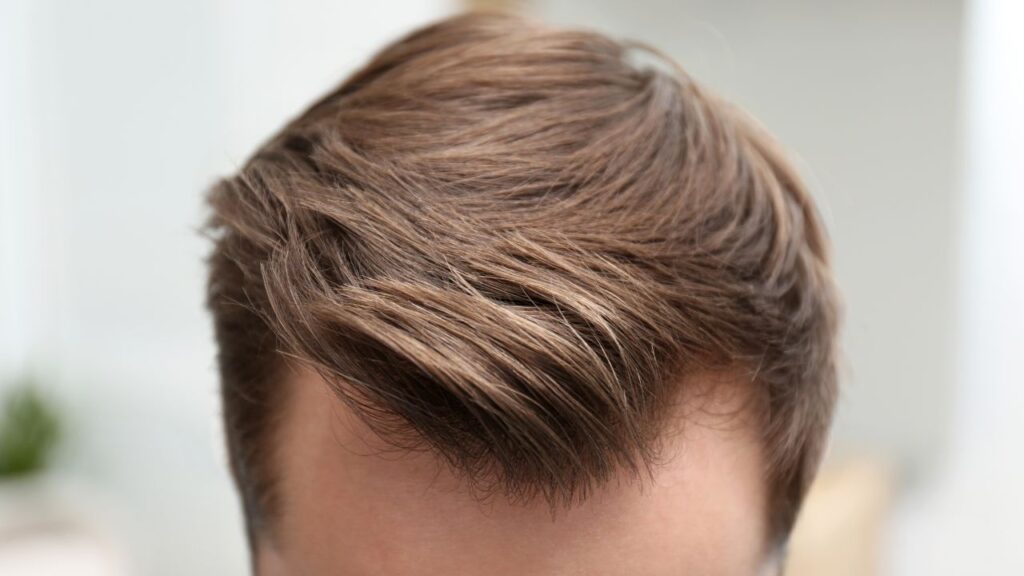
4. What Influences Your Final Hair Transplant Bill?
The price ranges mentioned above are broad because the final cost of a hair transplant in Singapore is tailored to each individual and the specifics of their procedure. Several key factors determine the final quote you receive from a clinic:
- Chosen Technique (FUT vs. FUE/DHI): As established, FUE and its variations like DHI are generally more labour-intensive and time-consuming due to the individual follicle extraction and implantation process. This often translates to a higher cost compared to the FUT strip method. Techniques like no-shave FUE can also add to the cost.
- Number of Grafts Required: This is frequently the most significant factor driving the total cost. The larger the area of thinning or baldness you need to cover, and the denser you want the result to be, the more grafts will be needed. More grafts mean more surgical time and resources, directly increasing the price.
- Surgeon’s Experience & Clinic’s Reputation: Highly experienced and reputable surgeons who specialise in hair restoration, along with clinics known for high standards, advanced technology (like NeoGraft or ARTAS systems), and consistent results, often command higher fees.
- Clinic Location: Clinics situated in prime areas of Singapore may have higher operating costs (rent, staffing), which can be reflected in their pricing structure compared to clinics in less central locations.
- Complexity of the Case: Individual factors can make a procedure more complex and influence the cost. This might include the patient’s specific hair characteristics (e.g., very curly hair, fine hair), scalp condition, the need to work around existing hair, or if it’s a corrective procedure following a previous transplant. The contrast between hair and skin colour can also play a role, potentially requiring more grafts for perceived density.
- Inclusion of Pre/Post-Operative Care & Additional Treatments: It’s vital to clarify what the quoted price includes.
- Does it cover the initial consultation fee?
- Are post-operative medications (like painkillers, antibiotics), special shampoos, follow-up appointments, and post-op hair washes included?
- Some clinics might also recommend or bundle additional therapies like Platelet-Rich Plasma (PRP) or Low-Level Laser Therapy (LLLT) to support healing and growth.
Given these variables, simply comparing “cost per graft” between clinics can be misleading. A thorough consultation is essential to receive a personalized assessment and a detailed quote outlining exactly what is included in the price.
5. Not Ready for Surgery? Consider Non-Surgical Options
While hair transplant surgery offers a potentially permanent solution, it’s not the only path available for addressing hair loss, nor is it always the first step. Especially in the earlier stages of hair thinning, or for those not ready for surgery, several non-surgical treatments are commonly used and available in Singapore. These can sometimes be used as standalone treatments or even complement surgical results.
Read our article on available hair loss treatments in Singapore to learn more.
6. Conclusion
Choosing a hair restoration path, especially surgery, requires careful consideration. Singapore offers advanced surgical options like FUT, FUE, and DHI, each with its own set of procedures, benefits, drawbacks and associated costs.
It’s also important to have realistic expectations about the results and timeline. Transplanted hair typically sheds within the first 2-3 weeks after the procedure, and this is normal. New, permanent hair growth usually begins around the 3rd or 4th month, gradually becoming denser over the following months.
The final, mature results are typically visible around the 9 to 12-month mark, and hair can continue to thicken even beyond that. Results can vary between individuals based on factors like hair characteristics and adherence to post-operative care

